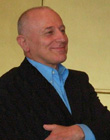Customers
A selection of the organizations that have worked at least once with the Change Monitor is provided below. The intervention has been applied in nearly every sector in business and in government agencies. Certified senior consultants provide the necessary support.














Primary School the Rainbow
Tax and Customs Administration
Center for Work Relations
Defense Telematica Organization
ICT Judicial Organization
Judicial Adolescent Institution Hunnerberg
Judicial Pedagogical Center Sprengen
Ottho Gerard Heldring Foundation
Province of Drenthe
Regional Police Force of Friesland
RVS Insurance
Our Second Home
Rijnstad Foundation for Social Work
Home Care Amsterdam
Testimonials
The Change Monitor has many satisfied customers. Naturally, they deserve a prominent place here. Reading about some of their experiences will give you an idea of the variety in their situations. Then you can decide for yourself if the intervention might also be useful for you.
In what follows, customers look back on their experience of working with the Change Monitor. Each of the accounts stresses the quality of the discussions that took place with people from every layer within their respective organizations. The intervention enables people to talk about how they experience the changes and ensures the generation of new ideas to move the process forward.
You will also notice that our customers chose deliberately to work with the Change Monitor and was genuinely open to entering into a conversation with their respective organizations. They reaped clear benefits, as their stories reveal.
Harry Koopman - Avans University of Applied Sciences
 Chairman of the Board of Directors Avans University of Applied Sciences (now retired)
Chairman of the Board of Directors Avans University of Applied Sciences (now retired)
“In our case, the change process we were going through had to do with our highly unusual approach to implementing our 2007–2010 policy plan. It was unusual because we had immediately begun the implementation within innovative organizational experiments with the knowledge of our employees. Halfway through the plan period, the implementation had been going well. We decided to use the interim evaluation as an impetus to get many different internal groups back into motion for the further implementation of the plan.
We chose for the Change Monitor because it allowed us to hold clear, pre-structured discussions about how people in the various groups within our organization were experiencing the necessary adjustments we were making in our approach at that halfway point.
The Change Monitor provided me with an excellent overview that showed how the people in each target group viewed each of the various elements that played a role in the complex process I was managing. In the end, the existence of the policy plan was better known within the organization, and people were aware that we were being consistent in implementing it.
I was surprised at how effective the Change Monitor turned out to be as an instrument for starting a discussion. We were able to focus on a few truly striking developments. And it was good that we managed to avoid the usual tangle of ‘everything has to do with everything else’.
What I really like about working with the Change Monitor is that – following the discussions – it gives you a solid analysis that easily leads to concrete actions for adjusting your approach – and thus to concrete results.”
Saskia Moolhuijzen - DHV Consultancy and Engineering
 Consultant, DHV Consultancy and Engineering (formerly NPC)
Consultant, DHV Consultancy and Engineering (formerly NPC)
“NPC – a consultancy and project-management firm concerned with the optimal development and design of public locations – had been a subsidiary of NS Poort. In 2007, NS Poort’s board of directors decided that NPC’s activities did not qualify as ‘core business’. NPC was taken over by DHV in early 2009. The change took a long time and it had been decided that that process should be managed top down. That resulted in increasing concern and agitation among the NPC employees.
Using the Change Monitor seemed like a good way of involving employees in the change process after all. While they were unable to influence the ‘what’ of the change, they could at least do something about the ‘how’. The goal was very clearly to keep people motivated to work at NPC. We were interested in motivating as many as possible to continue their employment at NPC following the takeover.
The Change Monitor resulted in a high level of commitment to the change process within NPC. As I was also working there, I had a double role: both as an employee and as a consultant in the change process. The most important benefit of using the Change Monitor was that we managed to focus the discussions at meetings. We would no longer get stuck on the topic of employment conditions. Instead, we looked far more at where we could exert our influence, both as individuals and as teams.
I was very pleased with the great response we had to the questionnaire (83%), and that was without our even having to do any pushing. People were simply eager to influence the process, and with the Change Monitor we could offer them that possibility. Their enthusiasm was evident in the first place from the high response rate and in the second place by the high attendance rate and active involvement during meetings.
For me, the Change Monitor is a way of actively involving a great number of people in a change process. You start looking for areas where you can actually exert some influence. And even if the what is already set, you’ll find you can also do a lot in terms of the how.”
Gauke Zijlstra - Municipality of Dronten
 Gauke Zijlstra, City Manager, Municipality of Dronten (now interim manager and consultant)
Gauke Zijlstra, City Manager, Municipality of Dronten (now interim manager and consultant)
“When I chose to focus on my own work situation during a course I took on leadership, I was confronted with my management style and with the approach that I had chosen for change processes. It turned out that the Municipality of Dronten needed an intervention that would enhance the development of the organization.
By means of the Change Monitor and – no less important – with the efforts of Kilian Bennebroek Gravenhorst, I was able to find the energy we needed in our quest for the rationale and purpose of the changes. As so often, it was ‘the top’ that had felt a sense of urgency. But where and how deeply rooted was the resistance to the change? And how would we be able to put that into perspective and deal with it?
For us, the Change Monitor was a brilliant and highly useful intervention. It turned out to be anything but an employee (dis)satisfaction survey. Instead, it offered employees and the Works Council a perfect opportunity to make a constructive, critical and concrete contribution to the discussion about the quality of the change process.
The fact that employees were called on to take on responsibility for themselves was a surprising element. Tensions were made visible, but they were also put into perspective. The intervention challenged us as managers to expose our vulnerability. The process began to ‘flow’ once again.
Sometimes you need an intervention to be able invest in quality yourself, together with your own organization and with your own employees. I found the Change Monitor to be the perfect instrument at a crucial moment.”
Bart Vaessen - Lindenberg, House of the Arts
 Director, Lindenberg, House of the Arts
Director, Lindenberg, House of the Arts
“De Lindenberg was in the middle of a merger involving two, different-sized organizations. A small-scale theater came to join a large-scale arts-education institute. We used the Change Monitor to guide that merger.
We chose for the Change Monitor as a baseline assessment. The survey was held shortly after the organizations had started sharing the same space and the results were discussed soon after. It turned out that each group saw the merger process from a different perspective.
For me, the Change Monitor formed the basis for the change agenda. The results were recognizable. They showed there to be a very solid base of support for the merger among the personnel, but also that we had hardly been capable of taking advantage of that base in a positive way. The analysis of the answers gave us insight into how we could make the most of that base of support in the merger.
The nice thing about the intervention was the concrete agenda for the change process that came out of it. We could use the Change Monitor operationally as a change instrument. I found it to be good as a baseline assessment. Other methods, for example a culture scan, often fail to lead to real clarity.
One of these days now, three years after the merger, I would like to do the Change Monitor again to see how we have progressed. That would help us set the agenda for what we need to do next. I can definitely recommend the Change Monitor. If carried out properly, it can be of real help in complicated change processes.”
Maya van den Heuvel - Avans University of Applied Sciences
 Director of Organizational Development, Avans University of Applied Sciences
Director of Organizational Development, Avans University of Applied Sciences
“We were in the process of realizing the strategic goals as formulated in our long-term policy. Our idea was that this would not only demand that we do different things, but also that we do things differently. That realization led to the insight that our approach to innovation needed to be process-driven, rather than plan-driven.
In terms of its approach and its underlying philosophy of change, the Change Monitor fit in very well with the path we had chosen for innovation. In this approach, we pay equal attention to remaining focused on the strategic goals and to working together in realizing the change. Already at the halfway point, we started using the Change Monitor to assess our development so far. And by using the same intervention for the final evaluation, we were not only able to assess our progress during the second period, but we could use the outcomes in determining the strategy for our new long-term policy.
The Change Monitor is more than a research tool. It also functions as an in-depth process intervention. I gained better insight into what it takes for people to work together on a common agenda for change. Especially if we we hold our management responsible for the results in their respective academies or departments. The observations and personal advice that the certified senior consultant gave us about several components of our approach to change were likewise of great value to us.
For Avans, the Change Monitor has provided insight into the degree to which our organization can handle change processes. The level of commitment has increased in terms of the implementation of the long-term policy. We see the value and the result of the experiments that we did. And we learned to discuss and refine our change strategy with the top 50 of our organization. We now allow for different strategies and discuss the pros and cons rather than enforcing a single approach.
The effect of the Change Monitor could be seen and felt primarily in the collaboration between the initiators of the change and those people who were involved in it. The dialogue between those actors was crucial for the learning capacity of organization. If that is important to you as well, the Change Monitor – and especially the accompanying method of discussing the results – is certainly a highly valuable tool.”
Egberdien ten Brink - Social Services Northeast
 Director, Social Services Northeast
Director, Social Services Northeast
“In 2006, the social services departments of the municipalities of Delfzijl, Appingedam and Loppersum merged to form a single, intermunicipal social services department: ISD Noordoost. By the end of that year, the three different organizations were still very much in the process of becoming integrated with each other, and they all still needed to get used to the new situation. In working on forming a single new organization, the question arose: ‘What is already working well and what could be better?’
We opted for the Change Monitor because it was an appropriate intervention for entering into a dialogue with each other about the change process. At that point the employees had a need for more clarity and structure, while many questions had yet to be answered. The Change Monitor showed us that the group of employees had many different ideas about how we might better give shape to the change process.
Among other things, the Change Monitor brought to light that we could improve the communication with the employees. A large series of changes had been introduced in a short period. The style of management could become more personal, with more attention being given to the problems on the work floor. A new organization needs to have a solid basis. With the Change Monitor, we managed to broach the issues that we hadn’t yet dealt with.
Working together to find solutions to the problems that parties have jointly identified is something that takes place over a period of time. The style of leadership changes gradually, and there is greater confidence and more room for discussing problem areas and possible solutions. The employees’ creativity and capacity for finding solutions also needs time to grow. Likewise, positive milestones throughout the process are necessary for people to be able to notice that they are headed in the right direction.
A Change Monitor will not easily change a culture that has established itself over many years. Using the Change Monitor creates expectations about what the management will end up doing with the results, however. It demands of team leaders that they actually do enter into a dialogue with the employees about the changes that are at stake.
My tip would be to apply the Change Monitor as part of a change process in which there is explicit room for dialogue and a collaborative approach, for example when people are asked to build a new organization together or in the introduction of a new process.”
Jos van Ruyven - Lindenberg, House for the Arts
 Deputy Director, Lindenberg, House for the Arts
Deputy Director, Lindenberg, House for the Arts
“De Lindenberg was in the middle of a merger of two, different-sized organizations. A small-scale theater came to join a large-scale arts-education institute. The Change Monitor was used to guide that merger.
We wanted to show that we took the problems that go along with a merger seriously. We saw that each of the organizations had a completely different culture. Moreover, we wanted both organizations to benefit equally from each other’s good sides. And we wanted to make sure that the culture of the smaller organization wouldn’t be completely overwhelmed by the dominant larger one.
Some of the results surprised me. I found it valuable to be engaged in a change process in such a well-documented way. Organizations often race through that sort of process, paying little attention to the shared interests of all those involved. The results of the questionnaire enabled me to better design that process.
After the feedback meeting that is part of working with the Change Monitor, we went through a process in which we jointly came up with definitions for both the way we would be working and the culture in the new organization. The results of that process were unpredictable but they were supported by the employees.
Those definitions still form a frame of reference that people refer to. They include many elements of the culture of the smaller partner in the merger. That is something that never would have happened without the Change Monitor.”
Eddy Martens - Province of Drenthe
 Program Manager, Province of Drenthe
Program Manager, Province of Drenthe
“We were in the process of transforming the Legislative Assembly Building of the Province of Drenthe into a future-oriented office building. The traditional office rooms would give way to a more open, flexible working environment and all of the business processes were becoming digitized. Besides the physical and digital changes, this also meant a new way of working for all provincial employees.
We involved the provincial employees as much as possible in the preparatory phases that led to those changes. But even so, you noticed that the changes only really became tangible once the wrecking ball had started swinging and the first digitized business process had become operational.
We used the Change Monitor to support the changes from the moment that those actually became tangible. Having a solid base of support among the employees is obviously a crucial success factor in such a project and we wanted to know where we stood in that regard.
The Change Monitor really clarified how the provincial employees felt about the change projects and where the problems areas were, but also what they thought was going well.
We asked employees which solutions they saw for the problem areas. Their answers gave us highly useful ideas and once again we were able to show that we were taking their involvement seriously. The Change Monitor not only accurately maps out your existing base of support, it also helps to create a broader base of support at the same time.”
Riegholt Hilbrands - Dutch Land Registry Office
 Head of Production Legal Security (now Senior Management Consultant at Lean Management Institute)
Head of Production Legal Security (now Senior Management Consultant at Lean Management Institute)
“For quite some time now, the Dutch Land Registry Office has been undergoing a fundamental organizational change. Within one directorship, a number of different offices have been closed (resulting in the need for relocation), people have started working more often from home, more and more of the work itself has been automated and the availability of digitized information from the archives is having a major impact. The production department concerned wants to grow into a production company that will operate on a national level.
The managers within the board of directors have a clear desire to enter into a lasting discussion with everyone who is involved in that change process in terms of which things are going well and which areas could do better. That is rather complicated, since the changes arouse strong emotions. We need to take stock of the results to find out which topics matter the most. The Change Monitor is just the right instrument for that.
The Change Monitor has clearly showed us that the level of commitment among the people at ‘our Kadaster’ is high. They feel a strong attachment to their work and to the organization. And everyone thinks that good quality is an important aspect of the products that we deliver. The discussions about the changes resulted in 45 concrete actions for improvement, the first of which have already been carried out. To guarantee the progress of those improvements, the follow-up to the Change Monitor has become a permanent item on the management team’s agenda.
The production department has set aside 100 days for carrying out the various actions for improvement. That will help keep the attention focused and demonstrate to the people that we are taking their ideas seriously. Six months from now we will be using the Change Monitor again to determine if the results actually correspond with what we currently expect.
It is good to see that employees have put a lot of energy into that process and that that has really contributed in a constructive way to the changes. The discussions have resulted in a clear agenda in terms of what comes next, and that has proven to be very useful for furthering the actual realization of the changes. In that way, Kadaster is doing its best to become a national production company.”
Audrey Maeren - Assiniboine Credit Union
 Vice-President Strategy en Corporate Governance van Assiniboine Credit Union
Vice-President Strategy en Corporate Governance van Assiniboine Credit Union
“A few years ago, four organizations merged to form Assiniboine Credit Union (ACU), a Canadian financial co-operative. Next, the entire organization converted to a new banking system. Then ACU launched a significant process improvement initiative. In addition to these major initiatives, ACU introduced a number of smaller changes, yet also with high impact on both work and culture.
We recognized that we really didn’t know how well we had done in managing change or what our capacity was to continue with change. So we used the Change Monitor to show us how staff were feeling about the changes and to discuss their capacity to handle the changes yet to come.
The Change Monitor allowed us to assess our capacity for change and identified high energy areas and areas of worry from which we could take action. It engaged our leaders in the process and provided a safe forum where we could hold open conversations, leverage the insights of many, and build ownership to maintain our change capacity.
The results really gave us a starting point from which we could develop a plan. Without this tool, we may have taken action in the wrong areas and we most certainly wouldn’t have considered to cherish our strengths. The Change Monitor allowed us to focus attention in the appropriate areas to make a positive difference.
We were really surprised that the results were so positive. In fact, we discussed this at all of our leadership forums and concluded that, like most people, we tend to focus on our challenges rather than on what is going well.
I would recommend that other organizations undertake a Change Monitor. It engages people, it makes change everyone’s responsibility, and it provides focus. The Change Monitor has assisted us in setting a plan to nourish what we are good at and to address the worry issues. Through the engagement of all leadership groups, it gains the commitment and support of individuals to ‘own’ change. Importantly, in the brief time since we held the Change Monitor, we have seen action plans completed, excitement built and pride expressed in the accomplishments.”
Do you want to receive the free Change Monitor brochure?
And read more about Conditions for an effective use


